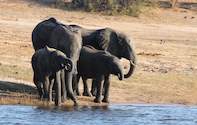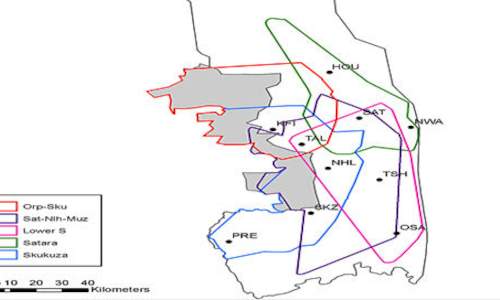
The advent of satellite collars into conservation has uncovered a secret previously only guessed at - elephants love to streak across the plains of Africa. "Streaking elephants" in Kenya have been described by Iain Douglas-Hamilton and co-authors T Krink and F Vollrath in a short communication in the journal Naturwissenschaften.
Elephants from all over Africa have been collared with satellite collars that remain in place for months to years, and are capably of precisely locating an elephant's position every hour of the day without having to follow the animal on foot or in a vehicle.
By analysing the plots of collared elephants' positions on a three-hourly basis, researchers have found that an elephant's home range is usually divided into one or more core areas where it spends most of its time. However, quite long distances can separate core areas, especially if elephants are not kept within fenced conservation areas. It is the unfenced elephants that love to streak the most.

The movement maps of these animals shows large home sectors that are linked by narrow travel corridors. Home sectors are usually in protected areas, while travel corridors often contain human populations that represent a threat to the elephants. Travel corridors were defined as being a path of continuous movement that was over 10km long.
In these corridors the elephants moved significantly faster than they did in their home sectors, moving at 1.1km/hr as opposed to 0.35km/hr. Observers noted that the speediest movements also occurred after dark, when the danger from humans would be least.
The paper concluded "A relatively small investment in keeping open crucial corridors identified by high-resolution radio tracking would allow elephants to spread their impact between different segments of their potential range." The study also showed that unfenced elephants spent between 10 and 98% of their time in officially protected areas.

 Elephant movement in response to changes in rainfall patterns can be used to determine biologically relevant boundaries between seasons, as ...
Elephant movement in response to changes in rainfall patterns can be used to determine biologically relevant boundaries between seasons, as ...